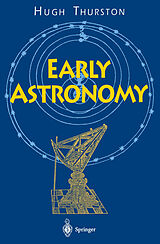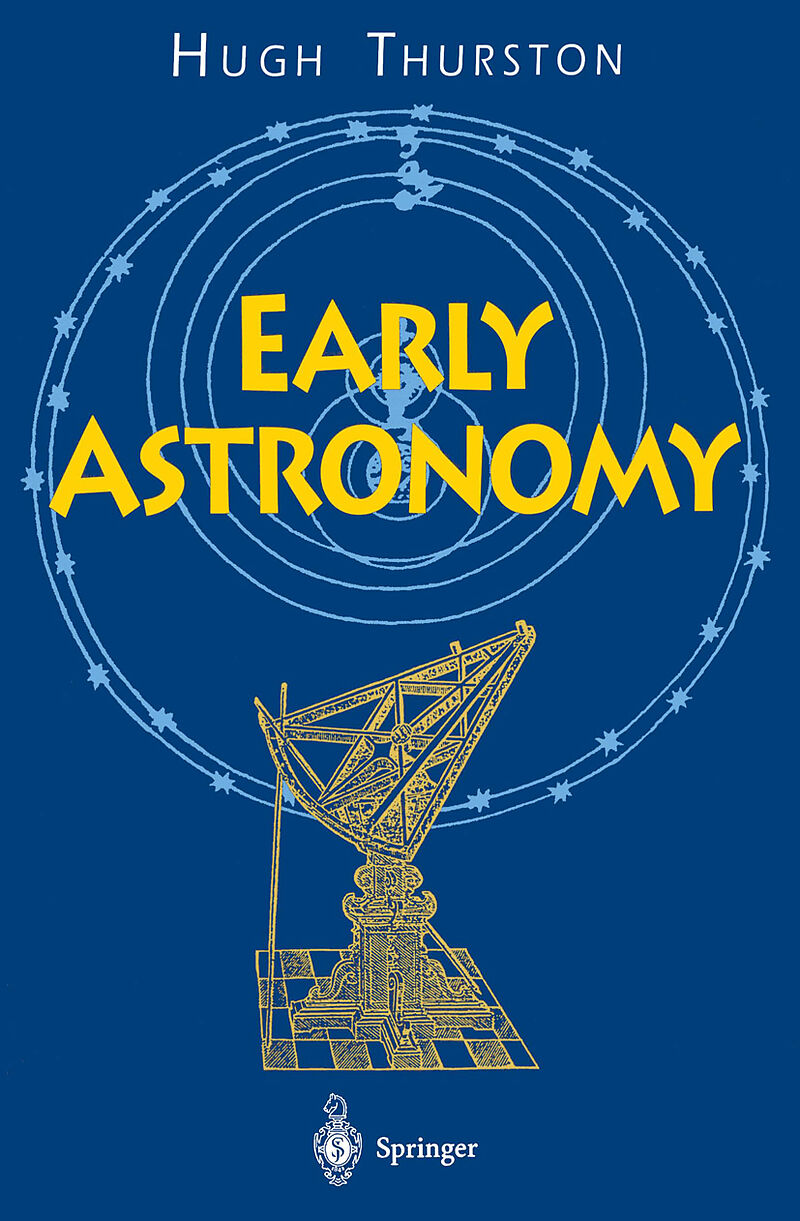Early Astronomy
Einband:
Kartonierter Einband
EAN:
9780387948225
Untertitel:
Springer Study Edition
Autor:
Hugh Thurston
Herausgeber:
Springer New York
Auflage:
Softcover reprint of the original 1st edition 1994
Anzahl Seiten:
284
Erscheinungsdatum:
29.08.1996
ISBN:
0387948228
People must have watched the skies from time immemorial. Human beings have always shown intellectual curiosity in abundance, and before the invention of modern distractions people had more time-and more mental energy-to devote to stargazing than we have. Megaliths, Chinese oracle bones, Babylonian clay tablets, and Mayan glyphs all yield evi dence of early peoples' interest in the skies. To understand early astronomy we need to be familiar with various phenomena that could-and still can-be seen in the sky. For instance, it seems that some early people were interested in the points on the horizon where the moon rises or sets and marked the directions of these points with megaliths. These directions go through a complicated cycle-much more complicated than the cycle of the phases of the moon from new to full and back to new, and more complicated than the cycle of the rising and setting directions of the sun. Other peoples were interested in the irregular motions of the planets and in the way in which the times of rising of the various stars varied through the year, so we need to know about these phenomena, i. e. , about retrogression and about heliacal rising, to usc the technical terms. The book opens with an explanation of these matters. Early astronomers did more than just gaze in awe at the heavenly bodies; they tried to understand the complex details of their movements. By 300 H. C.
Klappentext
The earliest investigations that can be called scientific are concerned with the sky: they are the beginnings of astronomy. Many early civilizations produced astronomical texts, and several cultures that left no written records left monuments and artifacts-ranging from rock paintings to Stonehenge-that show a clear interest in astronomy. Civilizations in China, Mesopotamia, India and Greece had highly developed astronomies, and the astronomy of the Mayas was by no means negligible. Greek astronomy, as developed by the medieval Arab philosophers, evolved into the astronomy of Copernicus. This displaced the earth from the central stationary position that almost all earlier astronomies had assumed. Soon thereafter, in the first decades of the seventeenth century, Kepler found the true shape of the planetary orbits and Galileo introduced the telescope for astronomical observations.
Zusammenfassung
These directions go through a complicated cycle-much more complicated than the cycle of the phases of the moon from new to full and back to new, and more complicated than the cycle of the rising and setting directions of the sun.
Inhalt
1. Early Stargazers.- The Celestial Bowl.- The Constellations.- The Rotation of the Heavens.- The Sun.- The Moon.- The Planets.- The Stars.- The Astronomer's Tools.- 2. Megalithic Astronomy.- Stonehenge.- Other Megalithic Structures.- 3. The Babylonians.- Early Period.- Sexagesimal Numerals.- Late Period.- 4. The Egyptians.- 5. The Chinese.- Chinese Units.- 6. The Greeks.- The Early Thinkers.- The Classical Greeks.- Hipparchus.- Ptolemy.- 7. The Astronomy of ?ryabha$$ \mathop t\limits_. $$a.- The Sun.- The Moon.- The Planets.- Further Topics.- Unwritten Astronomy.- 8. Arabic Astronomy.- 9. The Mayas.- The Moon.- Venus.- Eclipse Table.- The Accuracy of the Maya Calendar.- 10. The European Renaissance.- Copernicus.- Tycho Brahe.- Kepler.- Appendix 1. Hipparchus's Table of Chords.- Appendix 2. Calculation of the Eccentric-Quotient for the Sun, and the Longitude of its Apogee.- Appendix 3. Ptolemy's Table of Chords.- Appendix 4. Calculating the Radius of the Moon's Epicycle.- Appendix 5. The Eccentric-Quotient and Apogee of Mars.- Appendix 6. Reversed Epicycles.- Further Reading.- Sources of Information.

Leider konnten wir für diesen Artikel keine Preise ermitteln ...
billigbuch.ch sucht jetzt für Sie die besten Angebote ...
Die aktuellen Verkaufspreise von 6 Onlineshops werden in Realtime abgefragt.
Sie können das gewünschte Produkt anschliessend direkt beim Anbieter Ihrer Wahl bestellen.
Loading...
Die aktuellen Verkaufspreise von 6 Onlineshops werden in Realtime abgefragt.
Sie können das gewünschte Produkt anschliessend direkt beim Anbieter Ihrer Wahl bestellen.
| # | Onlineshop | Preis CHF | Versand CHF | Total CHF | ||
|---|---|---|---|---|---|---|
| 1 | Seller | 0.00 | 0.00 | 0.00 |
